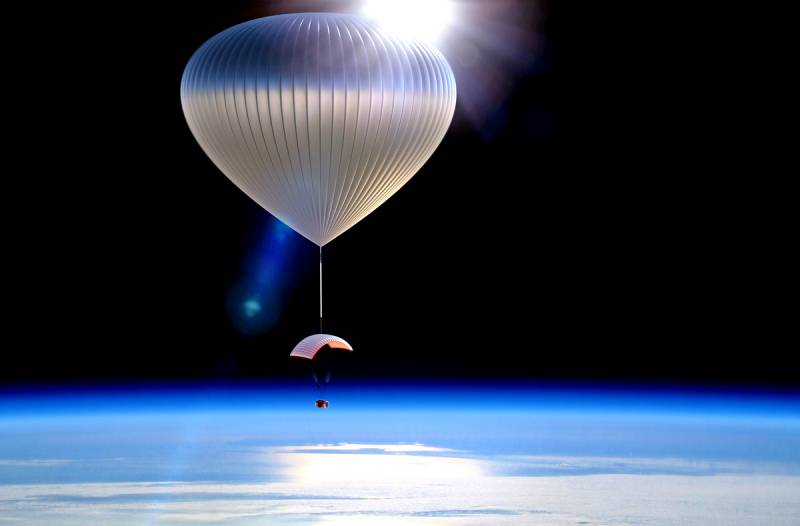Russian provider will launch a stratostat to distribute the Internet
While SpaceX and Arianespace are busy launching satellites under the StarLink and OneWeb programs, respectively, Russian engineers decided to test their method of providing network services to hard-to-reach areas. So, the provider of RuVDS plans to conduct an experiment using a high-altitude probe, with which the distribution will be carried out.
The hardware platform, which will rise to a height of 40 km through a balloon, will be equipped with a server, a video camera, an on-board computer, a screen, a GPS beacon and communications. Throughout the flight, the stratostat will not only distribute the Internet, but also transmit video captured by onboard cameras to the ground.
According to the designers, the data will be transmitted using radio frequency channels and received by an impromptu Flight Control Center. The probe rises to a height of 30-40 kilometers above sea level. In this case, the developers expect that in clear weather the broadcast will be carried out without interference at a distance of up to 100 km. from the place of take-off. But in cloudy conditions, this figure may drop to 20 km.
The experiment is scheduled for April 12. The stratospheric balloon will spend an hour and a half in the air. If the tests are successful, RuVDS will study the possible options for launching a series of probes for distributing the Internet.
The hardware platform, which will rise to a height of 40 km through a balloon, will be equipped with a server, a video camera, an on-board computer, a screen, a GPS beacon and communications. Throughout the flight, the stratostat will not only distribute the Internet, but also transmit video captured by onboard cameras to the ground.
According to the designers, the data will be transmitted using radio frequency channels and received by an impromptu Flight Control Center. The probe rises to a height of 30-40 kilometers above sea level. In this case, the developers expect that in clear weather the broadcast will be carried out without interference at a distance of up to 100 km. from the place of take-off. But in cloudy conditions, this figure may drop to 20 km.
The experiment is scheduled for April 12. The stratospheric balloon will spend an hour and a half in the air. If the tests are successful, RuVDS will study the possible options for launching a series of probes for distributing the Internet.

Information